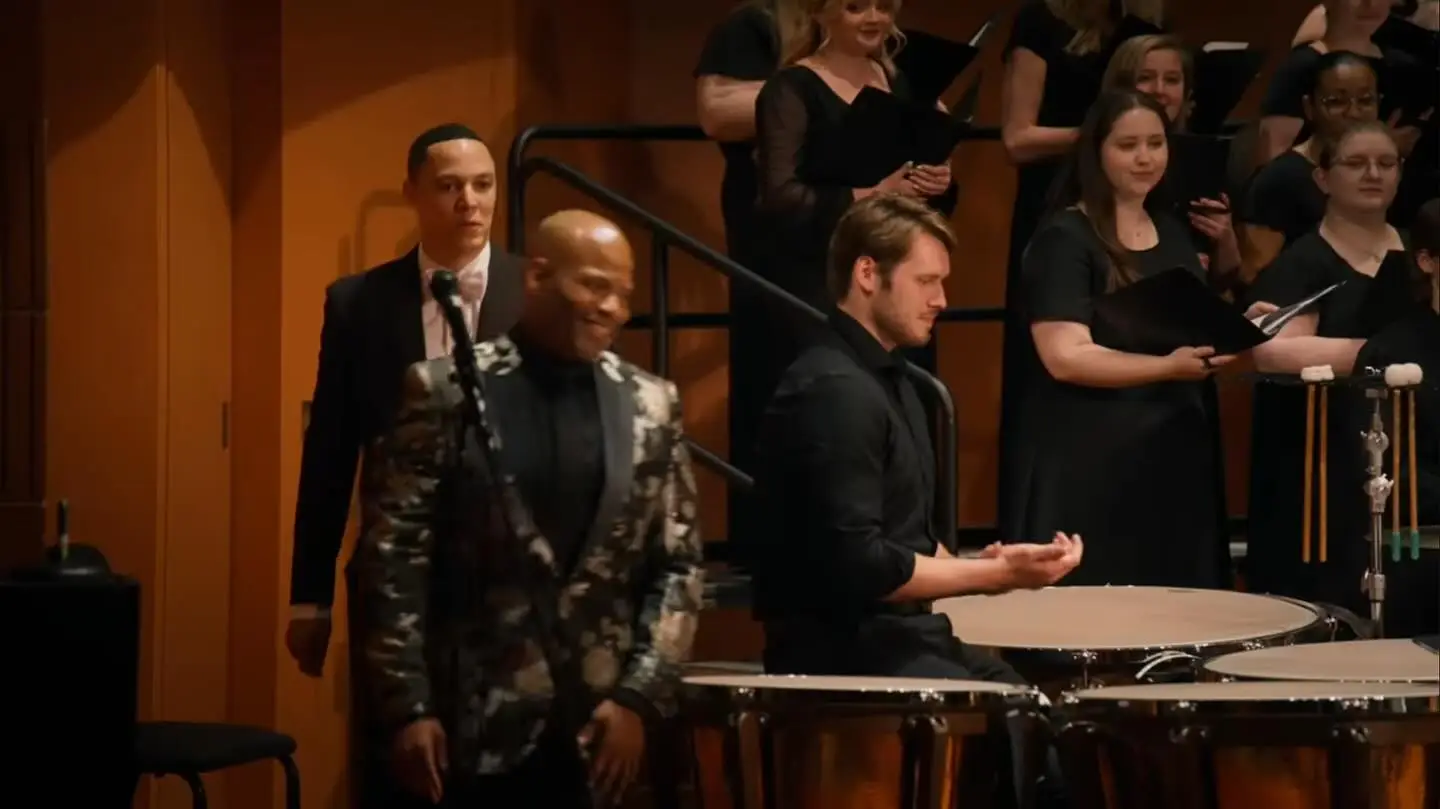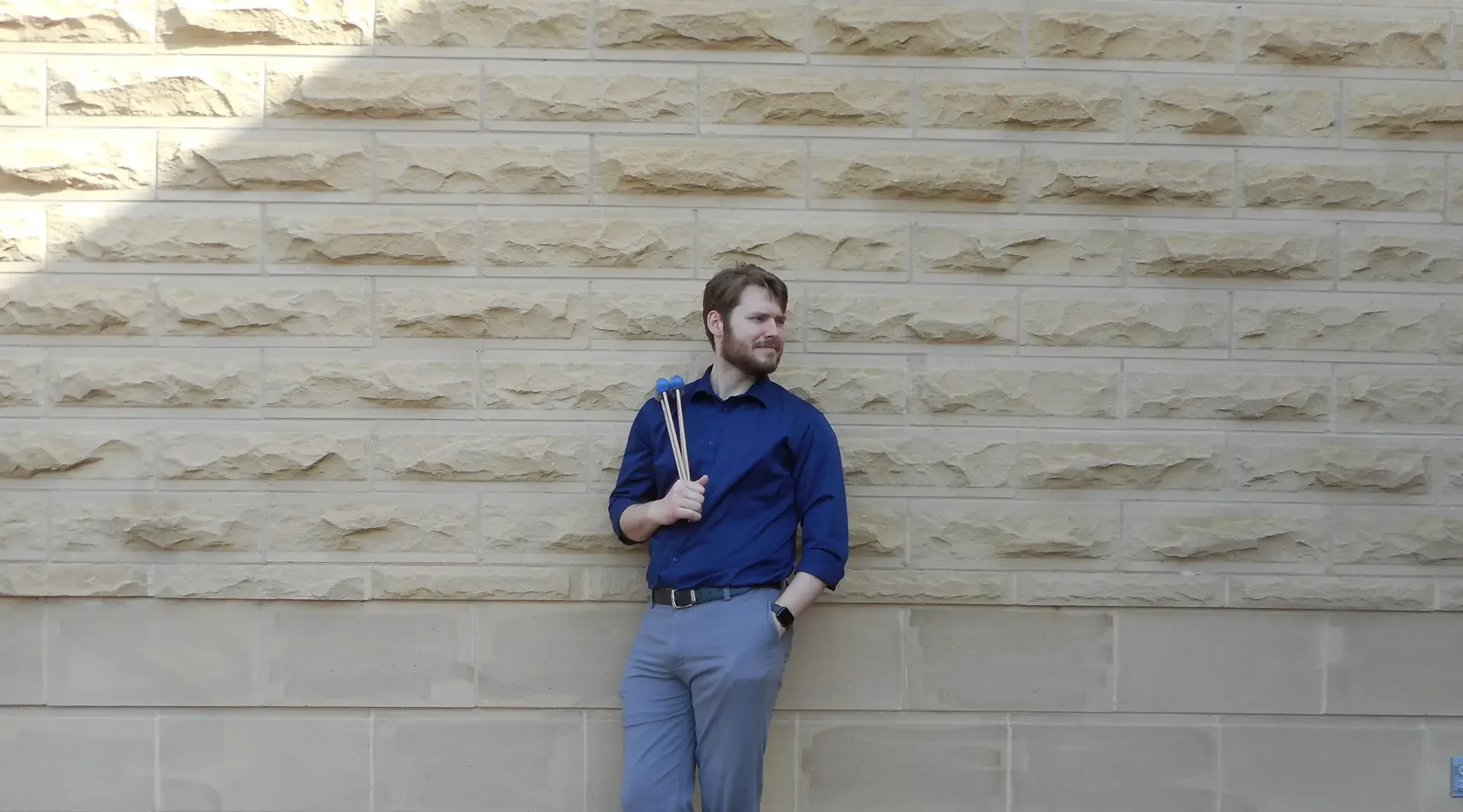How to Play Staccato & Marcato on Timpani
- July 22, 2025
- 3 min read

The timpani is an extremely resonant, pitched percussive instrument. While typically striking the drum with legato strokes, when staccato or marcato is called for, we must adjust the way that we strike the drum.
Today, we’ll be discussing how to play timpani with both staccato and marcato articulations.
TABLE OF CONTENTS
- Playing Timpani with Staccato Articulation
- Playing Timpani with Marcato Articulation
- Timpani Articulation Chart
Playing Timpani with Staccato Articulation
A staccato is a sharp, or shortened, sound and is notated by a dot above or below the note head.
(Don’t confuse this with a dot for note length, which is beside the note.)
Normally, we play timpani with a legato stroke with mallets striking about 6 inches away from one another. This type of stroke sounds great, but if we need staccato we’ll need to adjust from our more “French-style” grip to a snare drum grip, referred to also as the “German grip” on timpani (learn about snare drum grip here).
The reason we do this is because this grip provides power and control while the French grip prioritizes evenness and mobility.
Not only the type of stroke we use is affected when shifting to staccato articulation––our beating spots are affected as well. Rather than playing the drum with our mallets 6 inches apart, we are going to tighten our beating spots to 3 inches. Tightening the beating spots reduces the resonance projected by the drum, and therefore clarifies the articulation.
(*Remember, our beating spots are 2-5” away from the lip of the drum!)
Staccato technique will vary depending on the dynamics and what mallets you decide to use. Keep your ears open to making musical decisions.
Playing Timpani with Marcato Articulation
Marcato means to “perform with emphasis,” which I typically think of as adding weight, like a tenuto.
This is typically the loudest and most attack-emphasized articulation we perform on timpani.
At a forte (loud) dynamic, marcato is performed using our arms rather than a wrist hinge (as we did with staccato).
At a piano (quiet) dynamic, we snap our fingers to emphasize the sound. Squeeze the fulcrum while snapping the stick in with the second and third fingers. Keep your hands and arms relaxed.
Timpani Articulation Chart
Below is a chart on how I perform each of the articulations with timpani.
If this chart is helpful to you, consider donating to my ko-fi, and for every month that you’re a “Percussionist” tier donator ($8) you will receive a (more colorful) downloadable pdf about different percussion instruments!
Tell me if you found this blog helpful on Instagram, YouTube, Facebook or, if you really enjoyed it and believe in my mission, you can even donate as low as $3 to my Ko-fi to support me as I continue doing this work!
Thanks for reading and happy practicing!
Timpani Articulation Chart
| Volume | Articulation | Dynamic | Hinge | Stroke | Fingers? | Beating spots | Misc. |
| Loudest | marcato (emphasis) | Forte | arm | piston | closed | 3” apart | |
| louder | staccato (sharp) | Forte | wrist | piston | closed | 3” apart | snare grip |
| loud | general | Forte | forearm | n/a | closed | 6” apart | |
| quiet | marcato (emphasis) | Piano | finger snap | piston | open | 3” apart | |
| quieter | general | Piano | wrist | n/a | closed | 6” apart | snare grip |
| Quietest | staccato (sharp) | Piano | wrist | piston | closed | 3” apart |

